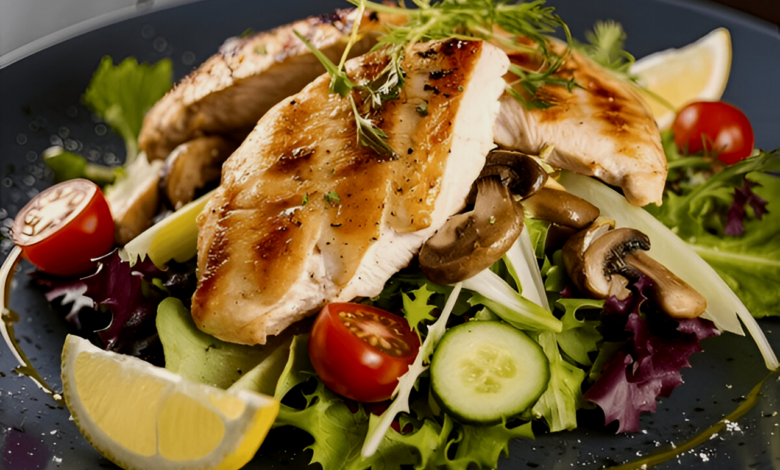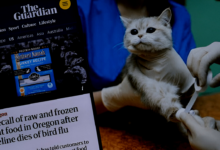
Raw vs. Cooked Diets: What’s Best for Your Pet?
Raw vs. Cooked Diets for Pets: Discover the pros, cons, and safety of each to choose the healthiest option for your furry friend's nutrition.
Raw vs. Cooked Diets: What’s Best for Your Pet? Choosing the right diet for your pet can be overwhelming, especially with the growing debate between raw and cooked diets. Pet owners want to ensure their furry companions receive optimal nutrition, but the question remains: which option is healthier and safer? While raw diets are praised for their natural ingredients and minimal processing, cooked diets offer convenience and reduced risk of bacterial contamination. Understanding the pros and cons of each can help you make an informed decision for your pet’s well-being.
The debate over raw vs. cooked diets often centers on nutritional value, safety, and practicality. Proponents of raw feeding argue that it mimics what animals would eat in the wild, promoting shinier coats and better digestion. On the other hand, advocates for cooked diets highlight the benefits of balanced, heat-treated meals that eliminate harmful pathogens. As you weigh the options, consider your pet’s specific needs, lifestyle, and any health concerns to determine the best choice.
Understanding Raw and Cooked Diets for Pets
What Is a Raw Diet?
A raw diet typically consists of uncooked meat, bones, organs, and sometimes vegetables or fruits. The philosophy behind this approach is that pets, particularly dogs and cats, thrive on a diet similar to what their ancestors consumed in the wild. Proponents believe that raw feeding enhances coat health, improves digestion, and boosts energy levels. However, critics raise concerns about bacterial infections (like Salmonella or E. coli), nutritional imbalances, and the risk of choking or intestinal damage from bones.
What Is a Cooked Diet?
Cooked diets involve preparing meats, grains, and vegetables to eliminate pathogens while preserving nutritional value. Many pet owners prefer this method because it reduces health risks associated with raw feeding. Cooking also makes certain nutrients more bioavailable, such as proteins and carbohydrates. However, overheating can destroy some vitamins and enzymes, requiring careful preparation or supplementation. Commercial cooked pet foods often undergo rigorous testing to meet nutritional standards, offering a convenient alternative to homemade meals.
Nutritional Benefits and Drawbacks
Raw diets are often praised for their high bioavailability of nutrients, as cooking can degrade certain vitamins and enzymes. Proponents argue that raw meat, bones, and organs provide pets with essential amino acids, healthy fats, and natural probiotics, which may improve digestion, skin health, and energy levels. However, raw diets also carry risks, including bacterial contamination (like Salmonella or E. coli) and nutritional imbalances if not carefully formulated. Additionally, raw bones can pose choking hazards or cause dental fractures, making proper preparation crucial.
On the other hand, cooked diets offer a safer alternative by eliminating harmful pathogens while still providing balanced nutrition. Lightly cooking food can enhance digestibility for some pets, especially those with sensitive stomachs, and allows for easier incorporation of vegetables and grains. However, excessive heat can destroy certain nutrients, such as taurine in meat, which is vital for heart health in cats. Commercial cooked diets are often fortified to compensate, but homemade versions require careful planning to avoid deficiencies. Ultimately, both options have merits, but the best choice depends on your pet’s health, your lifestyle, and proper dietary management.
Advantages of Raw Diets
Higher Enzyme Content: Raw food contains natural enzymes that aid digestion.
Improved Dental Health: Chewing raw bones may reduce plaque buildup.
Potential Allergy Relief: Some pets with food sensitivities respond better to raw diets.
Disadvantages of Raw Diets
Bacterial Contamination Risk: Raw meat can harbor harmful pathogens.
Nutritional Imbalance: Without proper formulation, pets may lack essential nutrients.
Choking Hazards: Bones can splinter and cause obstructions.
Advantages of Cooked Diets
Safety: Cooking kills harmful bacteria, making meals safer.
Easier Digestion: Some pets digest cooked food more efficiently.
Controlled Nutrition: Balanced recipes ensure complete dietary needs are met.
Disadvantages of Cooked Diets
Nutrient Loss: Overcooking can degrade vitamins and amino acids.
Processing Concerns: Some commercial cooked foods contain preservatives or fillers.
Less Natural Texture: Pets may prefer the taste and texture of raw food.
Safety Considerations
Raw diets pose significant safety concerns, primarily due to the risk of bacterial contamination (such as Salmonella, E. coli, and Listeria), which can affect not only pets but also humans handling the food. Pets with compromised immune systems, puppies, kittens, or senior animals may be especially vulnerable. Additionally, improperly balanced raw diets can lead to nutritional deficiencies or excesses—such as calcium-phosphorus imbalances—which may harm bone health over time. To minimize risks, pet owners must follow strict hygiene practices, source high-quality ingredients, and consider veterinary supervision when feeding raw.
Cooked diets, while generally safer from a bacterial standpoint, still require careful preparation to ensure nutritional adequacy. Overcooking can destroy essential nutrients, and homemade meals may lack key vitamins or minerals unless properly supplemented. Some cooked commercial diets use preservatives or fillers that may not be ideal for long-term health. Pet owners should choose high-quality, well-balanced commercial cooked foods or work with a veterinary nutritionist when preparing homemade meals. Regardless of diet type, regular veterinary check-ups are crucial to monitor a pet’s health and adjust feeding plans as needed.
Raw Diet Risks
Handling raw meat increases exposure to bacteria, posing risks to both pets and humans. Pets with weakened immune systems, puppies, kittens, or senior animals may be more susceptible to infections. Proper hygiene, sourcing high-quality ingredients, and consulting a veterinarian are crucial for minimizing dangers.
Cooked Diet Precautions
While cooking reduces bacterial risks, improper preparation can lead to nutrient deficiencies. Homemade cooked diets must be carefully balanced with the right proportions of protein, fats, and carbohydrates. Commercial cooked pet foods should be selected based on high-quality ingredients and AAFCO (Association of American Feed Control Officials) compliance.
Which Diet Is Right for Your Pet?
The choice between raw vs. cooked diets depends on several factors:
Health Status: Pets with specific conditions may benefit from one over the other.
Lifestyle: Busy owners might prefer commercial cooked foods for convenience.
Veterinary Advice: Always consult a vet or pet nutritionist before switching diets.
Read More: Best Homemade Pet Food Recipes for a Healthier Diet
Conclusion
The debate between raw vs. cooked diets for pets is complex, with valid arguments on both sides. Raw diets offer a natural, enzyme-rich approach but come with safety concerns, while cooked diets provide a safer, more digestible alternative at the potential cost of some nutrients. Ultimately, the best choice depends on your pet’s unique needs, your ability to manage food preparation safely, and professional guidance.
By weighing the pros and cons, pet owners can make an informed decision that promotes their companion’s long-term health. Whether you choose raw, cooked, or a combination, prioritizing high-quality ingredients and balanced nutrition is key to ensuring your pet thrives.
FAQs
Is a raw diet better for dogs and cats?
Some pets thrive on raw diets, but risks like bacterial contamination exist. Consult your vet before switching.
Can cooked diets meet all nutritional needs?
Yes, if properly balanced with proteins, fats, vitamins, and minerals, either homemade or commercial.
Are raw bones safe for pets?
They can help dental health but may splinter, causing choking or internal injuries—supervise carefully.
How do I transition my pet to a new diet?
Introduce changes gradually over 7-10 days to avoid digestive upset.
Should I supplement my pet’s diet?
Depending on the diet, supplements like omega-3s or probiotics may be needed—ask your veterinarian.







